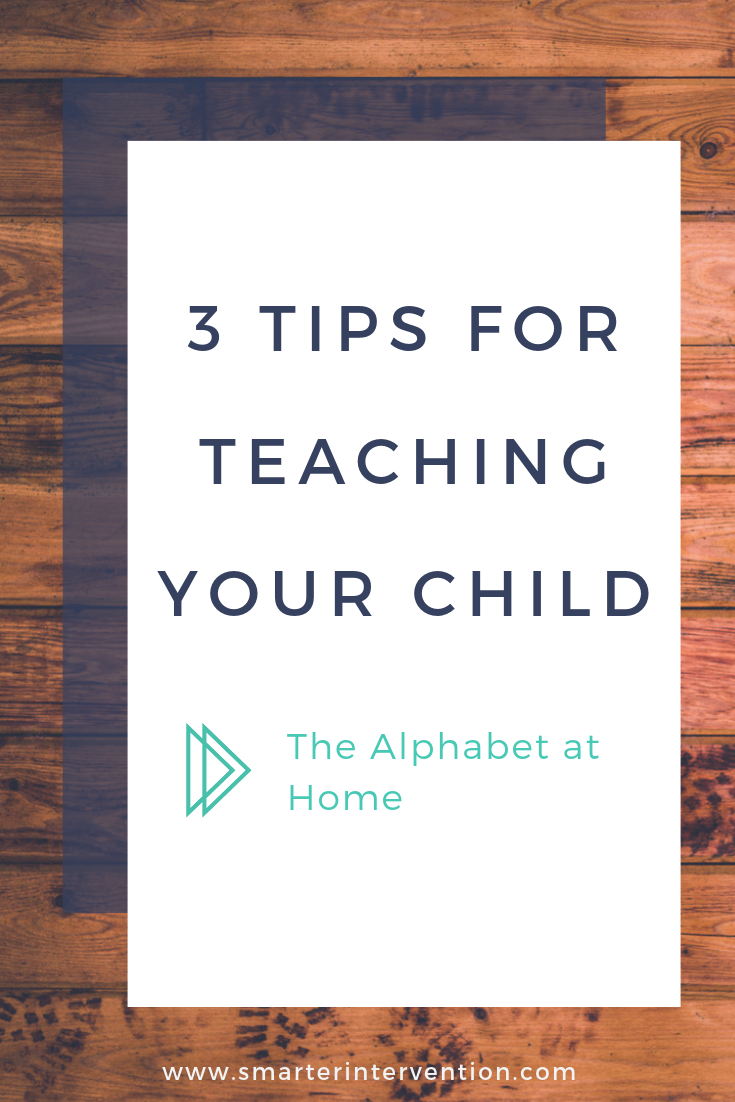3 Tips For Teaching Your Child The Alphabet At Home
This month we are going to talk about Early Literacy.
Early literacy is everything a child needs to know about reading and writing before he or she can read or write.
Our topics this month will include:
The Alphabetic Principle
If you have a preschool or kindergarten-aged child, then you are aware that a large part of their reading readiness instruction at school is focused on the alphabet.
The alphabetic principle is one of the first, and most important, skills a student needs to learn to be a successful reader.
The alphabetic principle means…
developing the understanding that letters are symbols that have a specific sound or sounds. This is a skill that goes far beyond reciting or singing the alphabet.
A student must be able to identify each letter of the alphabet as a specific representation of a specific sound. This is crucial to developing phonemic awareness and the ability to decode words… and it’s not quite as simple as it sounds.
Your child’s teacher will begin by teaching the concept of the alphabet in general, and the fact that the alphabet is a set of 26 separate letters which make different sounds. Some of this work will look like an alphabet map where students are asked to match alphabet tiles or magnets to the letter on the mat. At times, this will vary between uppercase to lowercase or a blend of the two for matching purposes.
Instruction will progress into focusing on the letters and their sounds in isolation. The goal of teaching the alphabetic principle is to get students up and reading as quickly as possible. Therefore, it is important to introduce high-frequency letters first. This means introducing the letters that occur the most in our language and that students will encounter in reading. For example, the letters m, n, s, t, l, a, and e are used in a higher frequency than q, x, and z.
Here are some tips you can use to support and further this learning at home:
Letter Stamps:
Stamps are an excellent "hands-on" activity for helping children learn about the alphabet. Using colored ink pads from a hobby store, your child can use these stamps in a number of ways to further understand the shape and function of upper and lower-case letters.
Making letters out of playdough, wiki sticks, or shaving cream:
Allowing your child to make larger representations of the letters is an excellent multi-sensory activity. This supports letter formation as well as letter/sound association.
Letter books:
Create a letter book in which each page contains one letter. Draw the letter in the middle of the page for your child to color. Then, they can draw or cut pictures from magazines that start with a particular letter and glue them into their "book."
Make Note:
This letter/sound connection can be difficult for students with dyslexia to learn or consistently apply successfully. A dyslexic brain often sees letters as shapes, not necessarily symbols that represent a specific sound. Early indicators of dyslexia can be observed during this instruction and application.
What to do next:
Try practicing these skills with a phonogram sound deck and magnet tiles. These are fun and engaging ways to work with your child or student. Use the buttons below to learn more!

